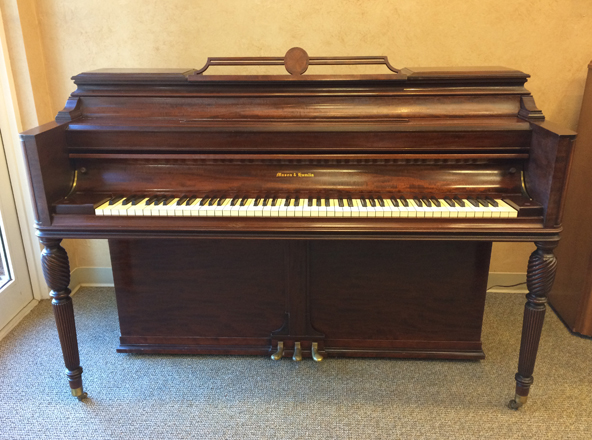
She was in fact the firs American singer at the Met who had no European training or international reputation. Anna Case was an American-born singer who debuted with the Metropolitan Opera at the age of 20 and sang her first solo role six months later. Many of the opera world’s greatest stars spoke on their behalf. Great pianists weren’t the only artists endorsing Mason & Hamlin pianos. In my opinion, the Mason & Hamlin is a real work of art.”

It is not short of being a small orchestra. Of them he said: “While preserving all the qualities of the percussion instrument, the Mason & Hamlin pianoforte also serves magnificently the composer’s concept by its extensive range in dynamics, as well as quality of tone. Composer Maurice Ravel chose Mason & Hamlin pianos for his first tour of America. They are the most supremely beautiful instruments that I know.”īauer wasn’t alone in his love for Mason & Hamlin pianos. Although Bauer maintained his interest in the violin, he had such great technical ability as a pianist and such a remarkable gift for interpretation on the piano, that it became his instrument and the brand he preferred was Mason & Hamlin, of which he wrote: “The Mason and Hamlin pianos represent the most perfect example of the piano maker’s art. In 1909, Etude Magazine reported on Mason and Hamlin artist Harold Bauer, the only piano virtuoso who was originally a concert violinist. Mason & Hamlin was at the forefront, and great virtuosos, including Sergei Rachmaninoff, endorsed Mason & Hamlin pianos.
Mason and hamlin model a for sale full#
The Golden Age of the Pianoīy the turn of the century, the Golden Age of the Piano was in full force and the most illustrious concert artists of the day aligned themselves with piano manufacturers. With Mason & Hamlin’s innovations, use of only the finest materials and expert craftsmanship, its pianos were the world’s costliest to produce and widely accepted as the world’s finest. Gertz, a genius who contributed many innovations to the piano industry, including the Duplex Scale, screw stringer and the Tension Resonator, a remarkable device that was designed to maintain the crown of the soundboard for the life of a piano. Wisely, it also hired brilliant designers. Following traditions established in making its organs, Mason & Hamlin built its pianos with the very finest materials-slowly and meticulously, with great attention to even the smallest detail. In 1881, the company decided to branch out into making pianos. It wasn’t long before Mason & Hamlin had established a worldwide reputation for excellence.

The fact that they continued to win year after year was even more astounding. The fact that a small American company won the top prize over its much larger, more established European competitors astounded the music world.

Arthur Loesser summed up their success in his book, Men,Women and Pianos, A Social History: “Mason & Hamlin…soon became and remained the foremost in the field.”įrom the organ harmonium, the company graduated to the American Cabinet Organ, a product that would earn Mason & Hamlin 1st prize at the Paris Exhibition of 1867. Fortunately, the combination of limited production and great attention to detail paid off, and the company and its products were instantly successful and in great demand.

Hamlin developed his discovery to perfection, and in 1854, he and Henry Mason formed their company for the purpose of manufacturing a new musical instrument that they called the “organ harmonium.”Īlthough the company was started with very little capital, the two owners were determined to make only the very best instruments, even if there were very few produced. Price and Company of Buffalo, Hamlin invented a way to voice organ reeds, so that they could imitate the sound of a clarinet, violin or other musical instruments. While working at the melodeon factory of George A. He was also known throughout the world as a composer and publisher of hymns, and is often called the “father of American church music.” Henry Mason shared his father’s lifelong dedication to music.Įmmons Hamlin was not a musician, but instead a brilliant mechanic and inventor. Their father was the famous composer and educator Lowell Mason, a visionary who was the first to bring music into the public schools of America. Henry Mason was a pianist and his brother, William, was one of America’s foremost classical pianists and composers. The Masons were renowned for their involvement in the arts. Henry Mason was a member of one of America’s oldest families-they were actually descendents of pilgrims who arrived on the Mayflower. Although their backgrounds and interests were very different, the two men shared a common goal: to make the world’s finest musical instruments. In 1854, two brilliant idealists, Henry Mason and Emmons Hamlin, founded the Mason & Hamlin Company in Boston, Massachusetts, the birthplace of American piano design and manufacturing.


 0 kommentar(er)
0 kommentar(er)
